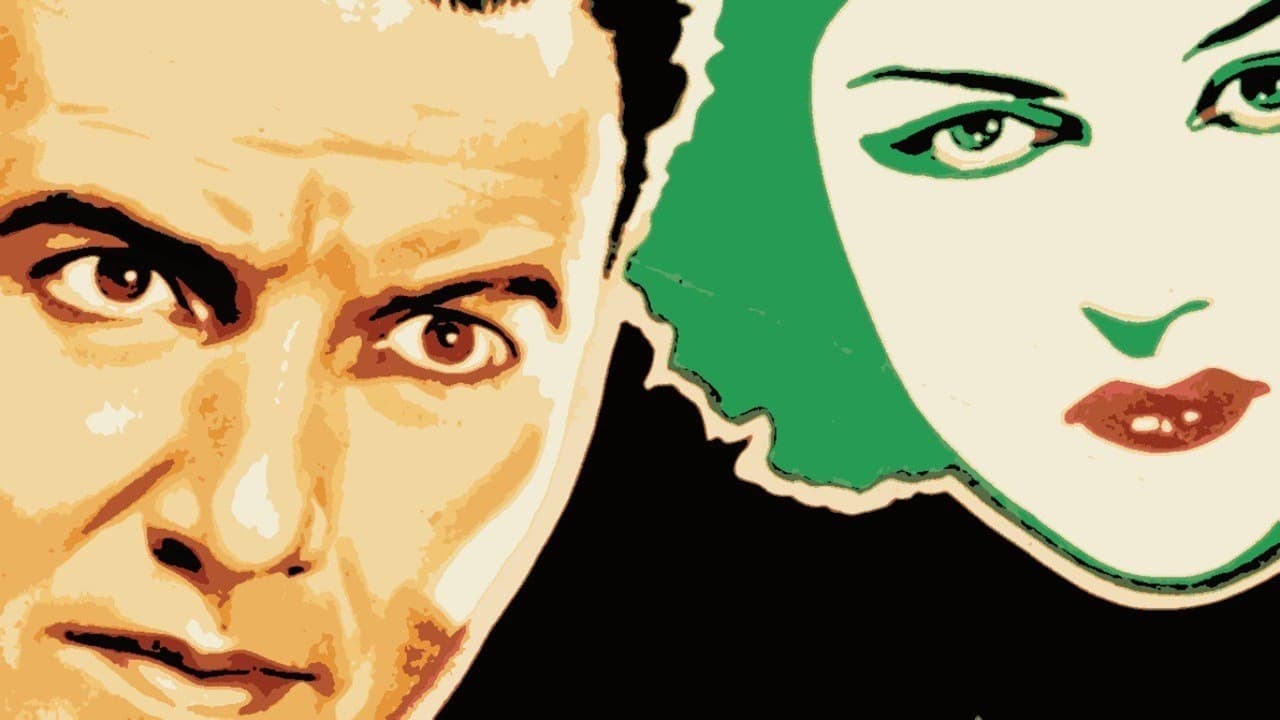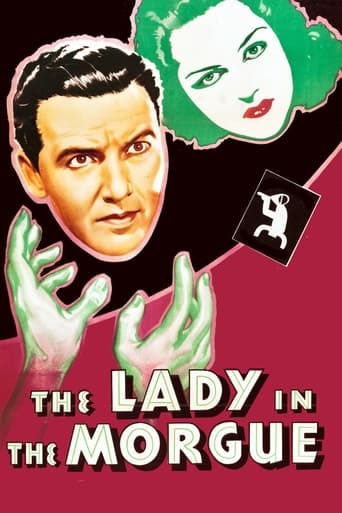



recommended
At first rather annoying in its heavy emphasis on reenactments, this movie ultimately proves fascinating, simply because the complicated, highly dramatic tale it tells still almost defies belief.
View MoreIt's the kind of movie you'll want to see a second time with someone who hasn't seen it yet, to remember what it was like to watch it for the first time.
View MoreThere is definitely an excellent idea hidden in the background of the film. Unfortunately, it's difficult to find it.
View MoreThis messy crime club murder mystery suffers from tiresome clichés and stereotypical characters that just aren't interesting enough, even for a film running 72 minutes. This bottom of the barrel B film focuses on the whereabouts of a corpse, allegedly a hotel suicide. With detective Preston Foster trying to discover the truth of what happened, it becomes obvious pretty fast that the underworld has an interest in the whereabouts of the corpse as well, one obviously non-grieving mobster claiming that the corpse was his wife. This overly familiar plot, done so much better, succeeds in getting more convoluted as it goes along. The featured cast is second rate at best. A weak entry in the many series Hollywood studios put out weekly to bring in dime store novel fans. In this case, the film-goer deserved change on that dime.
View MoreThat's how fast the movie unfolds. I think I followed the plot well enough to understand what happened, but I'm not sure. As near as I can tell, there was one unresolved murder, but it didn't affect the story one way or the other. It was also never explained how Preston Foster could be a suspect in one of the murders - he was a detective trying to solve it, after all. I guess it was to inject some humor and make the Police Dept. look comical. Never understood why 30's movie audiences bought the premise of mixing comedy into murder mysteries. To me they're like oil and water.There are lots of unexplained bits of trivia, coincidences and non-sequiturs, too many to mention here, but that kind of thing devalues the storyline and serves only to break the viewers concentration - and with this picture one needs all of one's concentration. The cast was serviceable, especially Preston Foster as the hero, and it was fun to see Bill Elliott before he became a cowboy star. But the break-neck pace makes me think I should see it again, to catch what I missed the first time - so my rating is a holding grade. I'll get back to you.
View MoreDuring the second half of the 1930s, Jonathan Latimer wrote five screwball mysteries featuring Chicago private eye Bill Crane. When not boozing or snoozing, his highest priorities, he cleverly unraveled complicated crimes.Universal "crime club" filmed three of the books. While all three had different directors, all three starred Preston Foster as Bill Crane and Frank Jenks as Doc Williams, his assistant. The Lady in the Morgue (1938), based on Latimer's similarly titled 1936 novel, was directed by Otis Garrett. It is the second, and best, of these films. The other two are The Westland Case (1937) and The Last Warning (1938).There are four mysteries in The Lady in the Morgue. Who was that young blonde found hanging in the Darlow Hotel? Was she Edna Brown, Agnes Christy, Katherine Courtland, Kay Renshaw, Alice Ross, Mrs. Sam Taylor, or Arlene Vincent -- or perhaps even someone else? Was she a suicide, or possibly a murder victim? Who purloined her corpse from the morgue? And where did they hide it? Colonel Black, owner of a Chicago detective agency, directs Crane and Williams to discretely find out if the girl was Katherine Courtland. (Though she is missing, her wealthy family wants no scandal.) Naturally, discretion doesn't work out and Crane ends up wanted by the police for body snatching and murder, targeted by rival gangsters, double-crossed by his boss, and condemned by local papers.Otis Garrett, who directed The Lady in the Morgue, was a rising star who tragically died just three years later. This may be his best film, containing, as it does, strong mysteries, snappy dialog, fast pacing, snazzy cutting, and many clever bits – some of which reappear several times. Having previously edited The Westland Case, Garrett was quite familiar with the Crane series, and, perhaps because of that, he successfully repaired one of the first film's major weaknesses: Foster and Jenks' over the top performances. In addition, he elicited strong supporting performances from Bill Elliot (as Katherine Courtland's brother), Thomas E. Jackson (as Police Lieutenant Strom), Don Brodie (as Crane's taxi driver), and Bryan Foulger (as the morgue attendant). (Indeed, soon afterward "Wild" Bill Elliot became a "B" western star.) The movie also contains, however, one extremely uncomfortable scene. Having bribed the Black elevator man to get into the dead woman's room, Crane tests his murder theory by casually stringing up the man, without even so much as an explanation. The detective expects the clothes hook will break as soon as the man begins to struggle. It does and Crane has been standing by in case he's wrong. Still, as insight into the racial attitudes of the era, it is horrifying.Finally, there is a climactic graveyard scene which bothers me, but which I cannot explain, not having read Latimer's novels. It basically repeats another scene from a prior movie, Hi, Nellie! (1934). To wit: both scenes take place at night, both involve disinterring bodies for identity checks, both involve prior removals, and both involve the bodies' new locations being detected in the same way. Is this coincidence, or plagiarism? And if it is plagiarism, then who's responsible? Could it be the author, the screen writer, or possibly even the director? I just don't know the answers. Do any of you, by any chance?
View MorePart of the Crime Club series, and based on an original by Jonathan Latimer, this nifty little mystery is often cited as a model of 30s B-movie adeptness. It was directed by the unjustly forgotten Otis Garrett (who died young), a former editor who uses flash-pan edits and other visual tricks to maintain a breakneck pace -- so fast that it's pretty difficult to follow the complex plot. Although a bit too reliant on dialog scenes, there are enough effective wisecracks, bizarre demimonde characters (shifty undertakers, dour taxi drivers, carefree taxi dancers) and risqué asides (apparently, the production code enforcers often neglected these low budgeters) to raise the quality well above the norm. One side benefit is an appearance by a young Barbara Pepper, sassy and sardonic as ever, but surprisingly lithe and seductive. Soon-to-be-famous Stanley Cortez provided the cinematography.
View More